Getting Senior Management Buy-In for Succession Planning
Getting Senior Management Buy-In for Succession Planning
Many leaders understand the importance of succession planning, and yet few have a proper plan in place. Consequently, it can be difficult to convince senior management to invest their time and resources in succession planning efforts. SIGMA’s succession planning process is designed to help organizations identify and develop internal potential to replenish existing talent when it exits the organization. The following workbook will provide you with the information you need to get buy-in from your management team so that you can start building your own planning process.
.
About the Workbook
It is estimated that 70% of succession planning initiatives fail within two years because they lose support from senior leadership. For that reason, your first step in building a succession planning process must be to create a strong business case for the importance of succession planning. This should be personalized to both your industry and your organization to be as relevant and compelling as possible.
SIGMA’s Getting Buy-in From Management workbook will walk you through a series of exercises to help build your case for succession planning.
After completing the workbook you will be able to identify:
- why succession planning is important
- what your organization’s current succession process entails
- how your current process compares to expert recommendations
- which areas in your organization are particularly vulnerable to sudden departures
- the depth of your current talent pool
- next steps in the succession planning process
.
Why Succession Planning is Important
A robust succession planning process provides a roadmap for success. It creates structure, ensures consistency, and aides in communicating the plan across all levels of the organization. Succession planning is also important because it allows business continuity despite inevitable changes in personnel. Engaging in the succession planning process will help your leaders retain organization-specific knowledge, motivate employees to pursue opportunities for development and promotion, and minimize costs associated with turnover.
.
Reviewing Your Current Planning Process
Before you can garner buy-in for your succession plan, it is important to ensure that you have a strong plan. Begin by reviewing the processes you currently have in place. Consider who is involved, what candidate selection criteria are used, how formalized and transparent the process is, and how well the process is communicated and perceived across the organization.
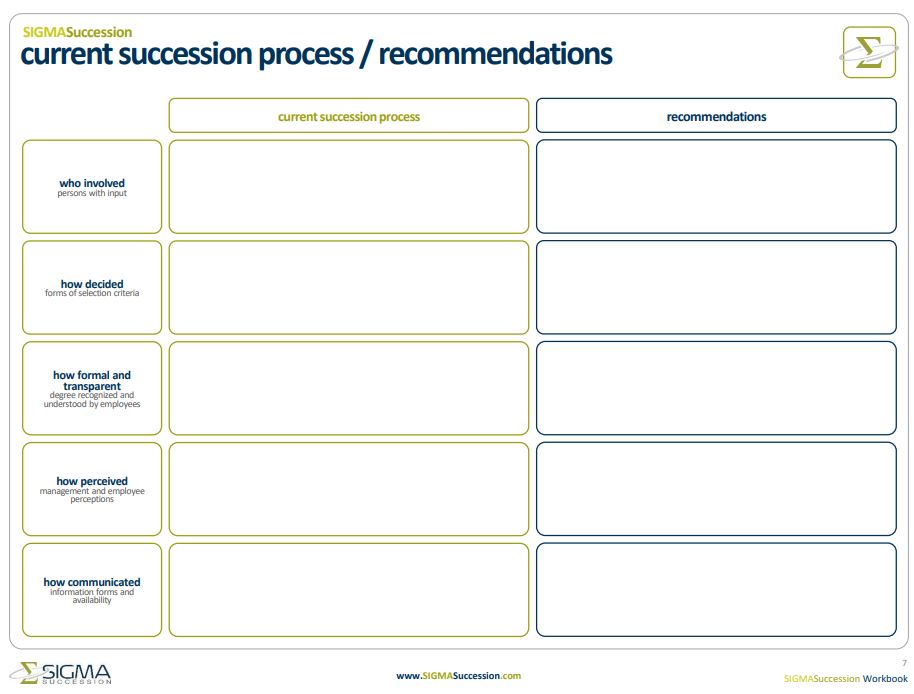
.
Next, complete the ‘Is Your Succession Plan Set Up for Success?’ checklist to assess the maturity of your planning process and identify areas that need to be improved.
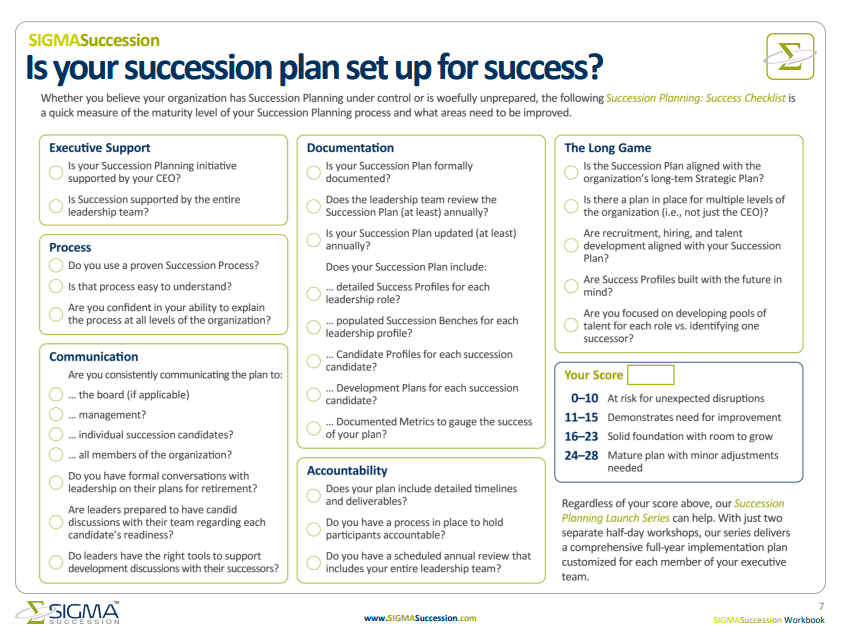
.
The Structure of Your Company
To get a better sense of which roles should be prioritized in your succession plan, fill in the at-a-glance organizational chart. Place the CEO at the top of the chart and add direct and indirect reports below. For each individual, fill out the chart based on their readiness to move into the CEO position in the next three years, plans to remain with the organization for at least the next five years, and the availability of replacements for their current role.
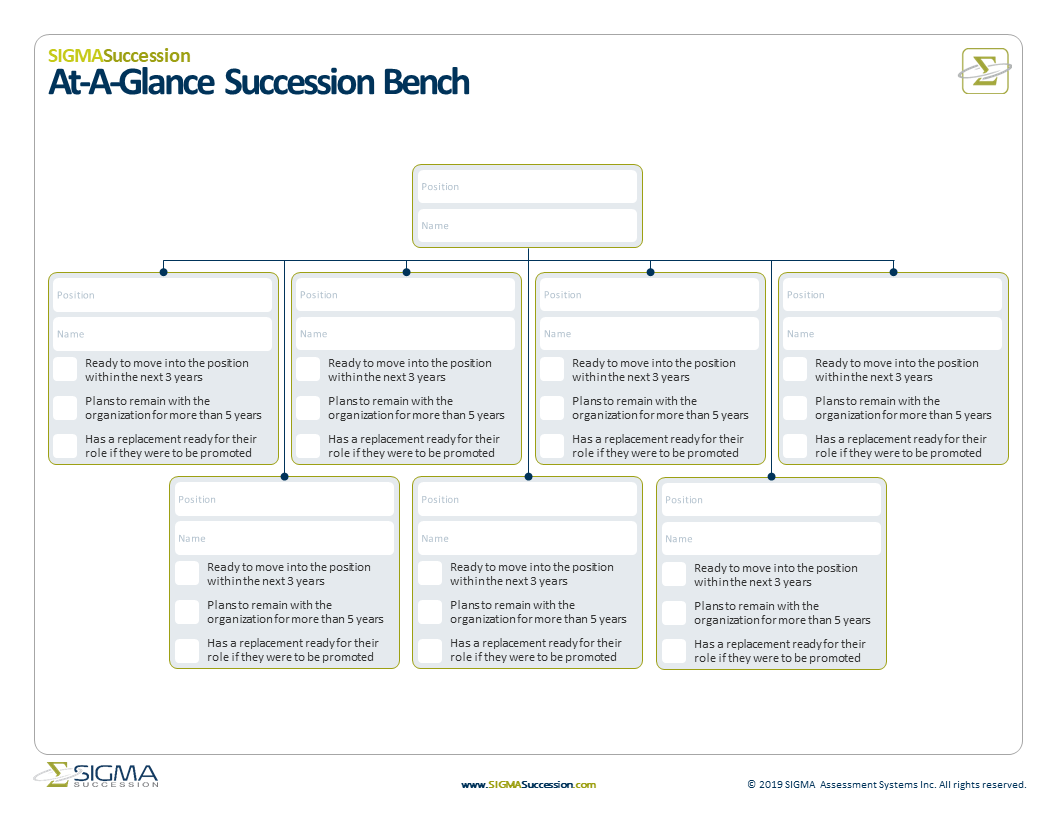
.
Take a moment to evaluate your completed organizational chart. Any role with unchecked boxes should be considered for succession planning. Roles with more than one empty box, or where several blank boxes appear together in a department should be flagged as high priority.
.
Determining the Strength of Your Succession Bench
The purpose of the succession bench is to evaluate the depth of your talent pool. This is done by tracking the readiness of succession candidates for each critical role.
To create a succession bench, identify your most critical roles for succession planning and indicate the incumbent and urgency for each position. Next, list all potential succession candidates for the role according to three levels:
- Level A: candidates will be ready for role in less than 3 years
- Level B: candidates will be ready for role in 3 to 5 years
- Level C: candidates will be ready for role in more than 5 years
Use the Succession Path column to track candidates’ intermediate growth through the organization via positions that will prepare them for the critical role.
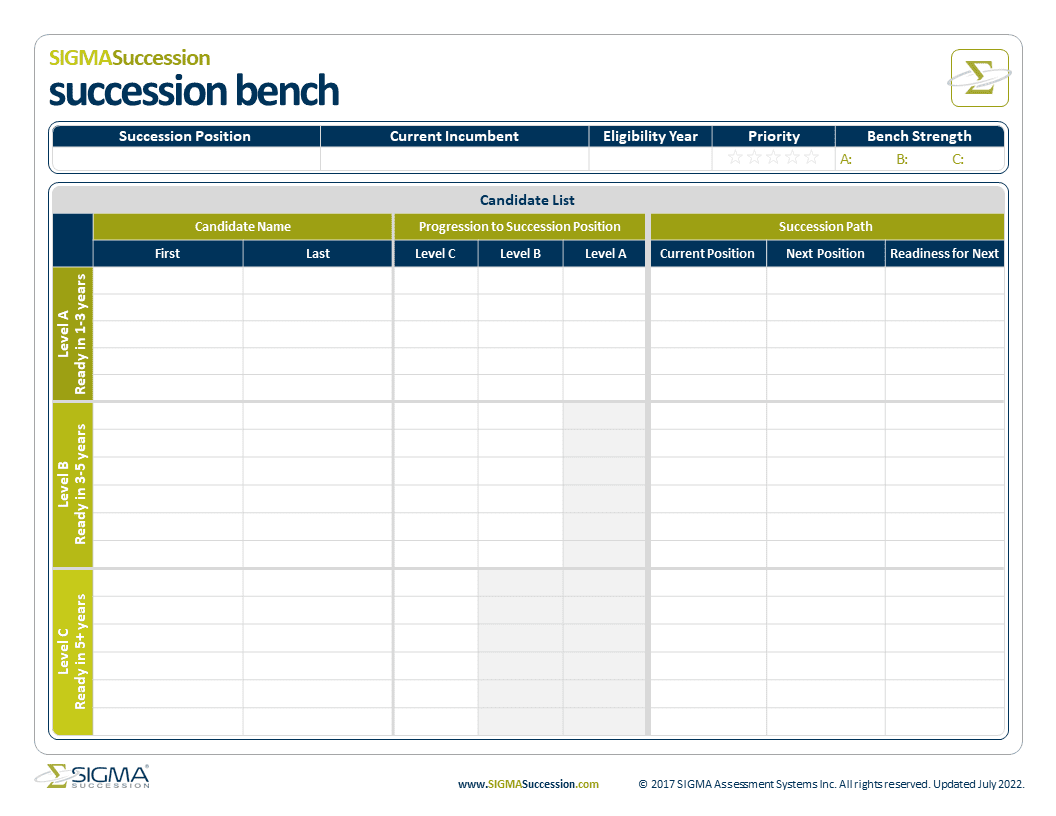
.
Next Steps
Now that you’ve had an opportunity to evaluate your organization’s succession process and succession bench, take some time to review your organizational chart for dependencies or areas of concern. Look for areas of high need, such as:
- roles where the incumbent is eligible or likely to retire
- positions that experience high rates of turnover
- individuals that possess knowledge that is needed but not widely known
Consider the skills needed for success in these roles. Do you have anyone who already has these skills? If a skilled person is promoted, who will fill their role? Review SIGMA’s succession process recommendations and identify any gaps in your current succession plan.
The Cost of Not Having a Plan
Are your leaders still not sure if succession planning is worth the cost? Take a look at the summary below to see what the cost of unplanned succession may be. Download the infographic and use this data to get your CEO and senior management on board to invest in the succession planning process.
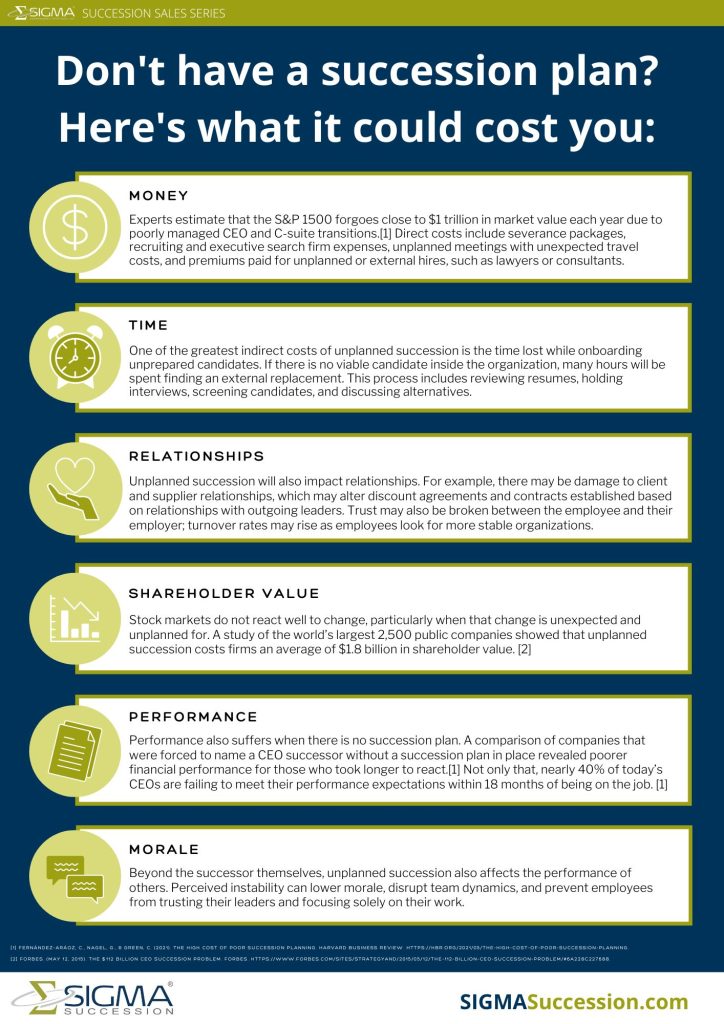
Download Infographic: The Cost of Not Having a Succession Plan
.
How SIGMA Can Help
After completing this workbook you should possess the information needed to speak with your management team about the importance of succession planning, particularly for those roles which may be vulnerable to sudden departures.
Once you’ve gained buy-in from your senior management team, check out our Succession Planning Guide to help you design your own custom succession plan.
If you’re looking for more guidance, SIGMA is here to help! Over the last 50 years we’ve worked with more than 8,500 private and public organizations to develop people potential and increase organizational effectiveness. We provide a host of assessments to guide your development efforts, and we offer custom succession planning services. To learn how SIGMA can deliver a full succession plan for your organization in just 30 days take a look at our Succession Planning Launch Series Workshops or contact us below.
.